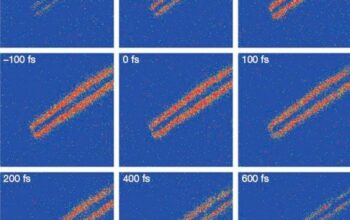Carbon, the fourth most abundant element in the universe, has long fascinated scientists and laypersons alike. Its ability to form an extraordinary array of compounds has provided a rich tapestry of exploration within the realms of chemistry and physics. Among its myriad allotropes, a particularly intriguing form known as Carbon 50 has made its recent debut, captivating researchers with its unique molecular geometry. This article delves into the characteristics, implications, and intrinsic allure of Carbon 50, exploring why this newly discovered structure has garnered significant attention.
The intrigue surrounding Carbon 50 begins with its distinct molecular architecture. Unlike its more famous allotropes such as diamond or graphite, which exhibit well-documented structural regularities, Carbon 50 presents an unprecedented configuration. The emergence of this synthetic compound suggests the potential for novel chemical properties resulting from its unique arrangement. With a formula reportedly depicting a spherical arrangement of carbon atoms, the geometric precision displayed by Carbon 50 could lead to varied applications, especially in nanotechnology and composite materials.
A common observation among chemists and material scientists alike is the stable yet versatile nature of carbon-based materials. The spherical structure of Carbon 50 invites comparisons to traditional fullerenes, such as C60, renowned for their hollow, cage-like formations. However, Carbon 50 diverges from the conventional expectations set by previous allotropes. This divergence hints at a plethora of unexplored chemical behaviors and interactions, making it a prime candidate for further empirical investigation.
Interestingly, Carbon 50’s geometric shape allows it to occupy a hitherto underexplored domain within the study of molecular geometry. The existence of such a configuration suggests that our current understanding of carbon’s versatility is potentially limited. This revelation evokes a deeper philosophical inquiry into the atomic interactions that give rise to diverse forms of matter. The manner in which atomic arrangements dictate properties is an age-old question in the field of physical chemistry, and the discovery of Carbon 50 fortifies the argument for continuous exploration in this domain.
The implications of Carbon 50 extend far beyond mere chemical curiosity. As modern technology accelerates towards the development of advanced materials and molecular devices, the characteristics inherent to this new form could yield transformative applications. For instance, its potential to serve as a catalyst in chemical reactions or as a scaffold in drug delivery systems could revolutionize modern medicinal chemistry. Furthermore, understanding the unique intermolecular forces at play within Carbon 50 can inform the design of other composite materials, enhancing the mechanical strength or electrical conductivity of compounds derived from carbon.
One must also consider the environmental implications of Carbon 50’s development. In an era increasingly dominated by a push towards sustainable practices, the synthesis and application of carbon structures like Carbon 50 could facilitate the transition from fossil fuels to cleaner alternatives. The capacity of such structures to sequester carbon effectively or enhance energy storage mechanisms presents opportunities for innovations in green technology. As the world grapples with climate change, the fascination with Carbon 50 reflects a broader narrative about harnessing the power of carbon in innovative ways to solve pressing global challenges.
Moreover, the aesthetic appeal of Carbon 50 cannot be overlooked. Molecules are not merely scientific entities; they are also a testament to the beauty of nature’s order. The geometric elegance demonstrated by Carbon 50 resonates with the principles of biomimicry, wherein nature’s forms inspire technological advancements. The interplay of symmetry, balance, and design in its structure evokes a sense of wonder, reminding us that science is also an art form underpinned by mathematical precision. This aesthetic aspect deepens the fascination with Carbon 50, elevating it from a subject of academic inquiry to one that resonates with a broader cultural appreciation for the elegance of molecular formations.
The exploration of Carbon 50 thus serves as a metaphysical reflection on the relationship between human inquiry and nature’s intrinsic order. It highlights the perpetual dance between known and unknown, encouraging a continual quest for knowledge. The attention garnered by Carbon 50 is not solely driven by its chemical uniqueness but is also informed by the realization that each scientific milestone unfolds new questions and avenues for exploration. As researchers delve deeper into the properties and applications of Carbon 50, the potential for revolutionary discoveries remains vast and largely untapped.
In conclusion, the debut of Carbon 50 epitomizes a landmark moment in the ongoing quest to comprehend the myriad manifestations of carbon. Its distinct molecular geometry challenges existing paradigms and beckons further inquiry into the chemical realm. The implications of this newly discovered allotrope are manifold, offering prospects for applications that may redefine technology, sustainability, and even aesthetics in the molecular world. As carbon continues to evolve, so too does humanity’s relationship with this remarkable element, steering us towards new frontiers in both science and appreciation for the natural world.










